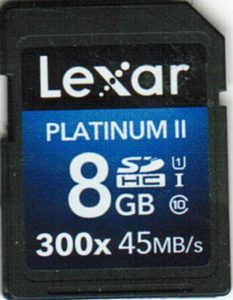
When it comes to digital photography, Lexar has become a very popular brand that photographers look for when purchasing new SD or CF camera cards. For the majority, these cards work without issue. However, there are times when they fail. There are various reasons for failure and data loss, but the most common issue we are encountering with Lexar camera cards and usb thumb drives is one that involves the controller failing.
Common Symptoms for Lexar Camera Card and Thumb Drive Failures
- absolutely no life from the device when connected to a system
- detects on a computer, but as the wrong capacity (ie, 32GB thumb drive detecting as 8MB) and says that the device needs to be initialized
- detects on a computer with the correct capacity, but does not give access to any sectors and requests to be initialized
- detects on a computer with the correct capacity, has sector access, but the data just looks to be a pattern of garbage and also requests to be initialized
Methods Used to Recover the Data
A common misconception that end user and even the most experienced computer technicians believe is that they can be easily recovered by simply replacing the controller or moving the NAND chips to another matching card. Unfortunately, this would only work in a very small number of cases and could result in complete data loss in most. This leads us to the following steps needed to recover the data:
- Desolder and remove each NAND chip very carefully
- Clean any excess solder from each NAND chip
- Get RAW dumps of each NAND chip (each NAND chip could contain 1,2,4 or even 8 sub-parts within, requiring each part to have its own separate dump file)
- Find ECC and verify every bit read
- Re-read any sectors found to contain errors through ECC calculations
- Find the XOR pattern
- Figure out the correct mix of dump order, splits and joins
- Put it all together with a the correct translator settings
- Find the file system
- Verify that the file structure and files are readable, if not, go back to step 7
How Long Does it Take
When it comes to chip-off recoveries, the time to recover the data can vary significantly between cases based on many factors:
- Capacity of devices (2GB will certainly be faster than 256GB)
- The health of the NAND (chips that have a lot of read errors will take a lot longer to read than those with little to no errors)
- The amount of data on the device
- The number of chips and dumps (the great the number of dumps, the higher the number of variations to work through)
- The complexity of the mix used to piece it all together
- How common the device is (maybe there is already a solution documented)
When it comes to recovering data from Lexar thumb drives and camera cards, Recovery Force has you covered. If you or anyone you know is in need of Lexar Data Recovery services, contact us to find out how we can recover your files.